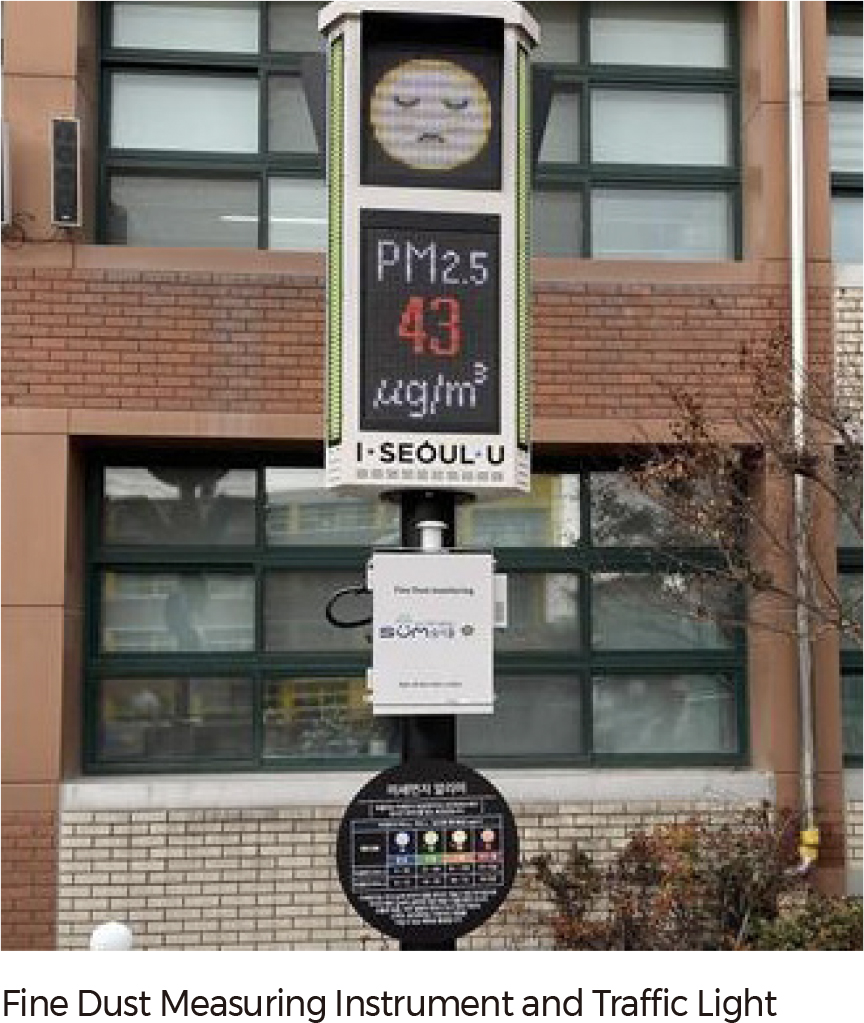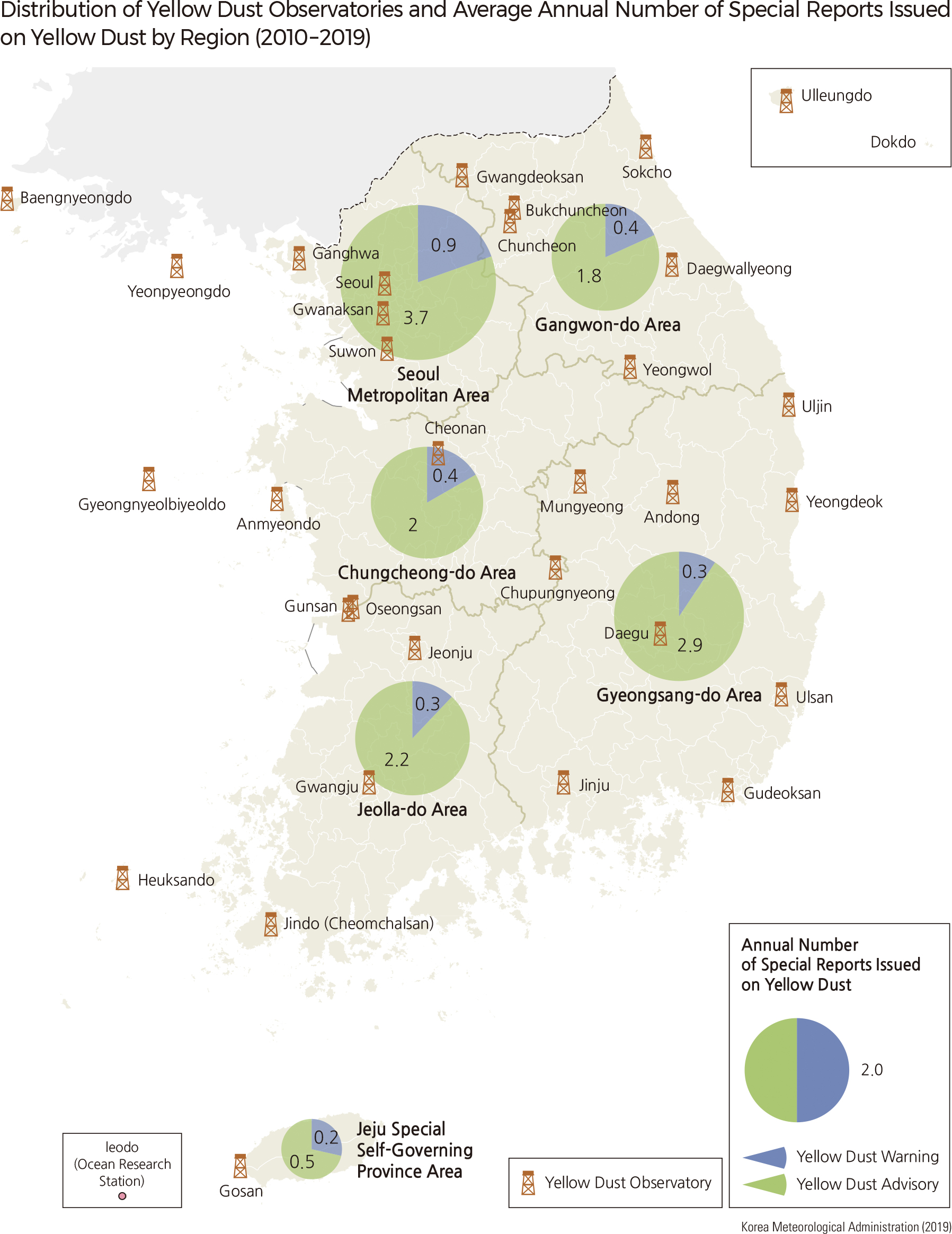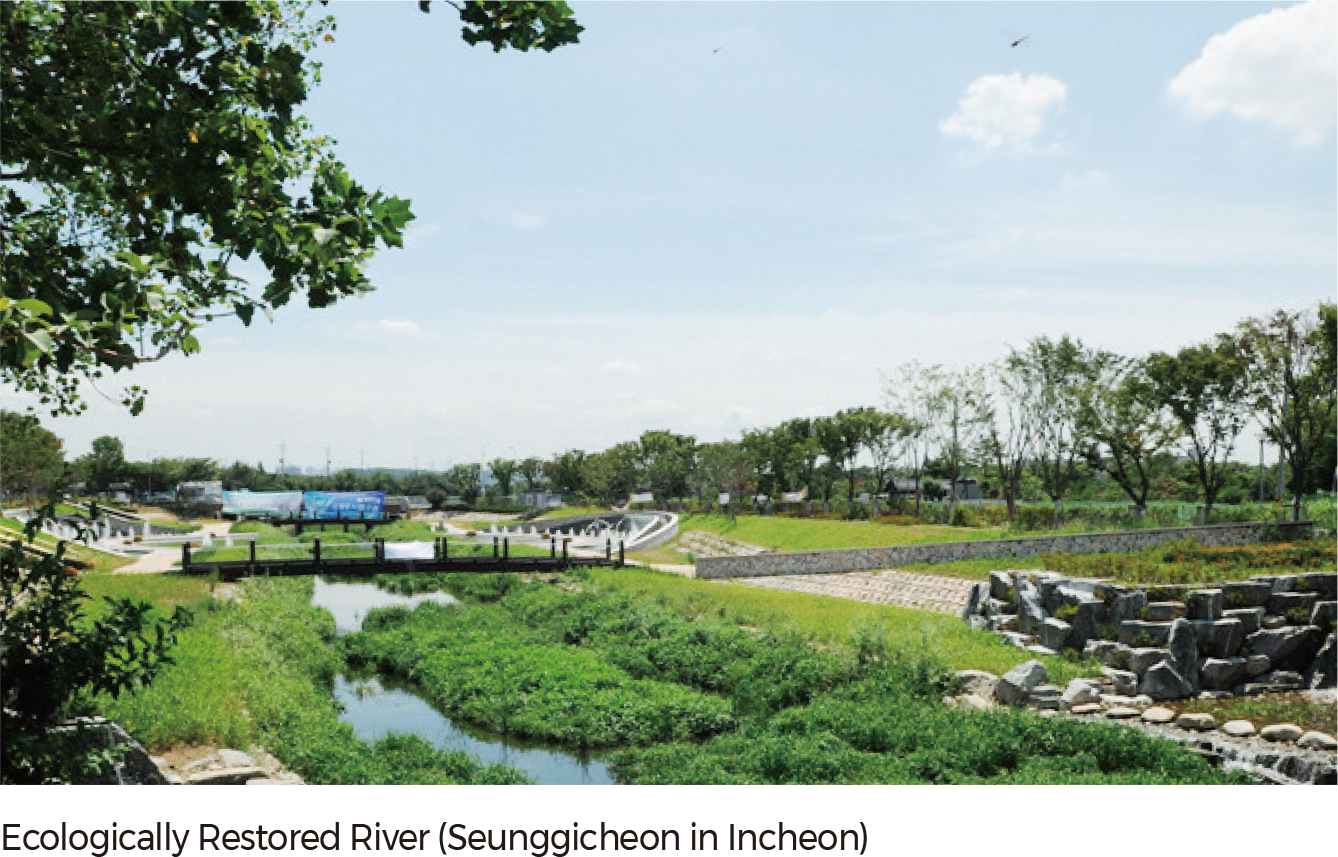Comprehensive Edition 2022
South Korea conducts many different monitoring projects to provide the public with real-time information on the status of various environmental parameters related to air quality. An air quality monitoring network of 584 stations was implemented to investigate patterns of ambient air pollution and to determine whether air quality standards were being achieved. The review and evaluation committee determines the degree of risk by referring to toxicity, ecosystem impact, and emissions. This network is tasked with monitoring sulfurous acid gas (SO2), carbon monoxide (CO), nitrogen dioxide (NO2), ozone (O3), fine dust (PM10 PM2.5), lead (Pb), and benzene, among other measures. These substances are mainly generated from industrial and fuel combustion processes. Some pollutants, such as fine dust particulate matter, have been gradually decreasing. The resulting data are stored in the National Air Pollution Information Management System (NAMIS). Air quality status and forecasts are publicized in real time through the AirKorea website (www. Airkorea.or.kr).
Yellow dust storms occur when fine silt and clay are blown by the wind from China or Mongolia across the Yellow Sea to Korea. These storms generally occur from March to May when cyclones are active. Sometimes the dust can reach as far as North America via strong upper-level west winds that pass over Korea, Japan, and the Pacific Ocean. The airborne particulates block sunlight and cause the sky to appear yellowish-brown. Yellow-brown dust can also be deposited across the landscape, causing problems for human health, agriculture, industry, transportation, and oceans.
The Korea Meteorological Administration issues fine dust warnings when an hourly average particulate matter (PM10) density of 300 μg/m3 is expected to last for more than two hours. A yellow dust warning is issued when an hourly average particulate matter (PM10) density of 800 μg/m3 is expected to last for more than two hours. |








